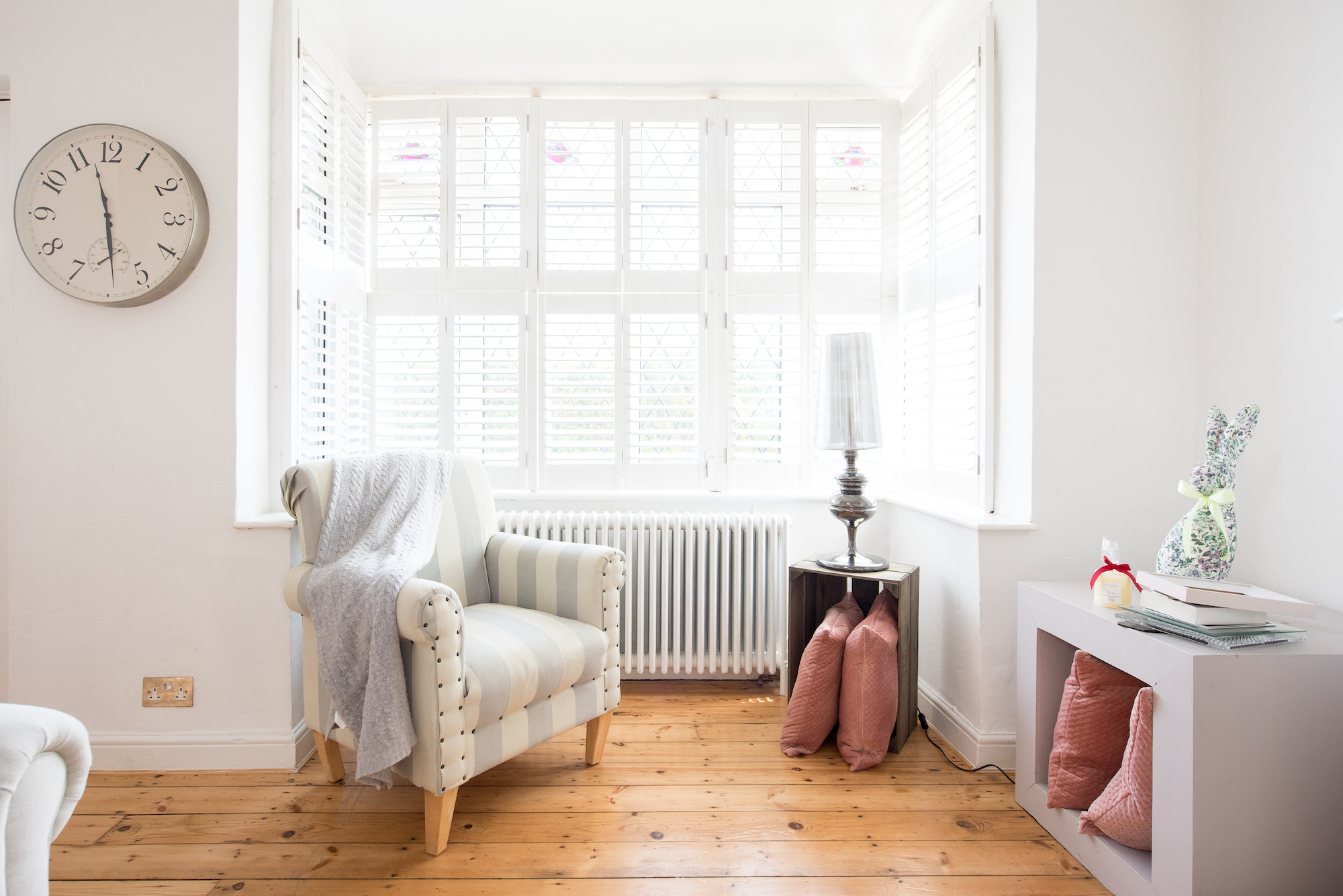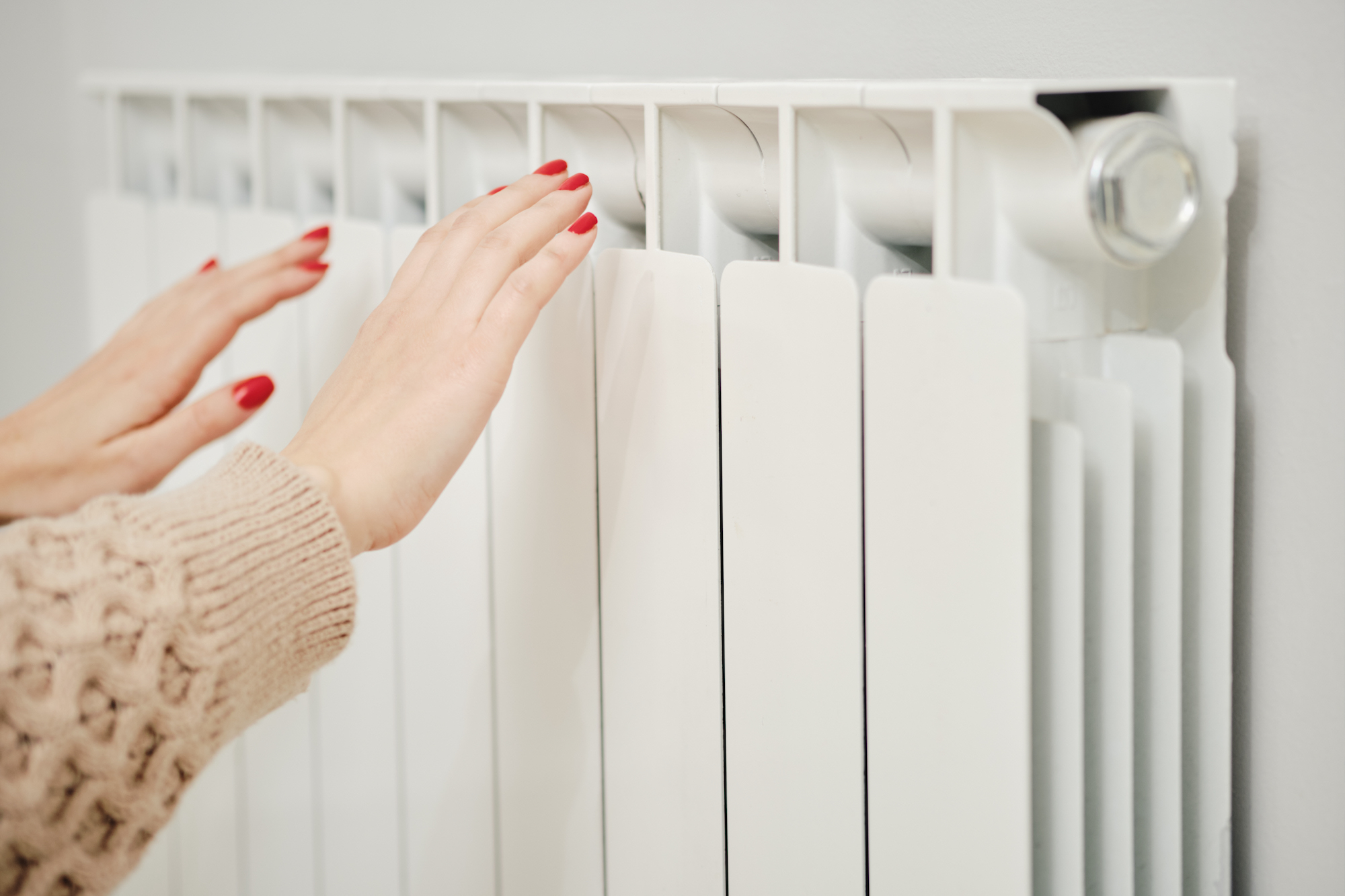Do air source heat pumps work with standard radiators? Your questions answered
Do you need new radiators when installing an air source heat pump or will old or existing radiators suffice? Find out with our expert guide

Are new air source heat pump radiators required when replacing a boiler with this renewable technology? It's a good question to ask before an inappropriate system is installed and the job becomes more costly than anticipated.
When heating your home with an air source heat pump it is all about low flow temperatures and if you have low temperatures then you need a larger surface area. Heat pumps have a lower flow temperature of around 35°C to 45°C, where as a traditional radiator system warmed using gas boiler central heating would have flow temperatures of around 75°C.
Underfloor heating is arguably the best solution in combination with a heat pump, but in existing homes with certain floor coverings, such as thick carpets, and those with solid, uninsulated floors, this is not always feasible.
Therefore, radiators, old or new, will need to have larger surface area to allow the heat to transfer properly around a room. Discover what to consider, if you will need to replace your radiators when installing and how this will impact the budget with our guide.
Do air source heat pumps work with radiators?
If you own an older home with radiators rather than underfloor heating, you may be asking are heat pumps suitable for old homes. Heat pump units do work with radiators but you need to ensure that the radiators have been designed to work at lower temperatures. This should be carefully considered when weighing up an air source heat pump vs gas boiler while it is still possible to install the latter.
Air source heat pump installations are most efficient when producing low temperatures. The heat pump works by compressing gas to create heat. Hotter gas requires higher pressure and therefore the harder the heat pump works and the less efficient it will be.
When swapping a boiler for an air source heat pump central heating system it is far better to have a small amount of heat for a long period of time rather than (like with a boiler) a high temperature for a short period of time.
The radiators therefore cannot be covered by boxing and also need to be designed with larger surface areas to allow lower flow temperature heat to be delivered to the room.
This could be changing single panel types of radiators to a double or triple panel radiator or possibly adding an extra radiator to the room. It's also worth noting that different alloys or metals such as aluminium, conduct heat quicker than steel and are sometimes better suited to more compact low temperature radiators but they will also be more expensive than steel ones.

Which types of radiators work best with air source heat pumps?
Any radiators with the correct output characteristics (such as those with a lot of surface area) are suitable for use with heat pumps. As mentioned above, double and triple panel radiators are more suitable than single panel radiators.
Radiators with low surface areas may not have much efficiency at the low flow temperatures that heat pumps provide. Common types of low surface area radiators include those with decorative columns, such as towel rails, single rail and some designer radiator ideas with panels.
While each of these radiators will work, they won't work very well and compatibility should be confirmed for use with your heat pump installation team.
What size do radiators need to be to work with an air source heat pump?
Radiator packaging will often have the output on it — with this you will need to check the design criteria. A 50 degree temperature difference will be shown as '∆T50'.
There is not one specific size for the best radiator to work with an air source heat pump in an average room — it depends on the heat loss calculations on a room-by-room basis.
How your radiators are plumbed, where they are positioned, especially if they have boxes around them, and also if they have been painted, can all affect the sizing calculations.
Standard radiators are designed to deliver a specific amount of heat at a temperature difference of 50°C between the average flow temperature in the radiator and the room temperature. Therefore if you buy a 1000W radiator and want the room temperature to be 20°C, it will deliver 1000W with the radiator flow temperature at 70°C (50°C temperature difference).
Now, heat pumps have an average flow temperature of 40°C, which means the temperature difference between that and the desired room temperature (20°C) is only 20°C. This means you will only get 304W (the resizing factor, see below) from a 1000W radiator.
So, if the calculated heat loss in the room is 600W you will need to install a radiator with a minimum output rating of at least 2000W. (Two 1000W radiators would also be fine.)
Many manufacturers offer resizing graphs that can be referenced to find out if your radiators will perform properly.
Usually you would use radiators with two or three panels and two or three convectors. The two panel and two convector radiators are known as Type 22 or K2 radiators and these are commonly fitted on heat pump central heating systems.
Do radiators always need to be replaced in existing homes?
Many older homes had radiators fitted without much attention being paid to the heat rating of the radiator. They may have been sized to fit under windows or simply supplied as they were ‘in stock’ or ‘on sale’.
If an existing home has certain energy efficiency measures such as double (or triple) glazing, modern draught-proof doors and insulation in cavities and lofts, then existing radiators (even where incorrectly sized) may be fine and not need replacing, so long as they're in good condition.
That said, the pipework to the radiators may need changing — more on which below.
When you get your survey for a heat pump installation, the installation company will usually perform a room by room heat loss calculation. They will also note the size and rating of the radiators in each room. These figures will then determine whether the radiators need changing.
It is quite usual that the existing radiators may be ok to go ahead with the installation but only at a higher flow temperature such as 50°C. It is worth asking how many radiators would need changing to bring the flow temperature down to say 45°C or even 40°C to improve the efficiency of the heat pump.
Alternatively your installer how many days a year it is likely that the heat pump will need to run at 50°C. This is known as degree day data.
Alternatively, if you don't want to install all new radiators, a high temperature heat pumps could be another option.
How much will it cost for new heat pump-compatible radiators?
Standard radiators cost around £80 - £300 (depending on size and brand) each, and replacing radiators is not difficult for an experienced plumber or heating engineer.
Choosing radiators made from aluminium will be the best option to work with a heat pump. Cast iron and steel will work as well, and might work out cheaper, but you may need to check if appropriate for your house's needs.
The anomaly here is the unknown hidden pipes. If you need to change the pipework (see below) then you need to find a route from the heat pump to each room. Working in ceilings is potentially easy but any removing of skirting, lifting of floors and chasing walls can be much more disruptive — and more costly to put right.
Do radiator pipes also need to be replaced?
If you are evaluating your own home for potential heat pump central heating installation then 22mm pipes are best, 15mm pipes should still be ok but anything smaller such as 12mm or 10mm microbore pipes could present design and performance issues.
This is because there are two ways to deliver more heat via water to a room: you either make it hotter or you deliver it faster. Boilers have a hot flow temperature and as such the pipes may have been sized for that heat but with heat pumps the ‘hotter’ option brings with it lower efficiency so the only remaining option is increased flow. Increased flow means larger pipes.
Small pipes could have pressure issues, balancing issues and potential noise issues, depending on how many rooms the pipes serve and how long the pipes are. To map the length and route of each pipe you may need a thermal imaging camera and some educated guesswork.
Many volume homebuilders will have used the smallest possible radiators and the cheapest pipework. This means that many so-called ‘new homes’ can be very difficult to convert to an efficient heat pump system without quite a bit of disruption and pipe changing. You may be able to get the plumbing plans from the builder if they have them, which would certainly help determine the central heating schematic and the pipe sizes.
What are the 'hidden' cost implications if the pipework is to be replaced?
Heating engineers and plumbers are qualified to do pipework, some electrical work and some basic mechanical work such as hanging radiators and boilers. Any other skills are supplementary.
So, if you expect them to replace tiling that has been chased, repair flooring, fit carpets, plaster walls, repair roofs or any of the other ‘making good’ tasks, then expect to pay top whack, as they are engineers and their time is valuable, but do not expect them to be as good as the trades that do these tasks each and every day.
There are implications when lifting floorboards as the decking boards may be glued and screwed and as such when they are cut the floor may creak. Stud walls may also end up uneven if the plasterboard is cut and patched after new pipework has been installed.
Always ask the installer what is included in the ‘making good’ of the project and what is not, as well as what they are happy doing and what is best left to others.
Get the Homebuilding & Renovating Newsletter
Bring your dream home to life with expert advice, how to guides and design inspiration. Sign up for our newsletter and get two free tickets to a Homebuilding & Renovating Show near you.
David is a renewables and ventilation installer, with over 35 years experience, and is a long-standing contributor to Homebuilding and Renovating magazine. He is a member of the Gas Safe Register, has a Masters degree in Sustainable Architecture, and is an authority in sustainable building and energy efficiency, with extensive knowledge in building fabrics, heat recovery ventilation, renewables, and also conventional heating systems. He is also a speaker at the Homebuilding & Renovating Show.
Passionate about healthy, efficient homes, he is director of Heat and Energy Ltd. He works with architects, builders, self builders and renovators, and designs and project manages the installation of ventilation and heating systems to achieve the most energy efficient and cost effective outcome for every home.

